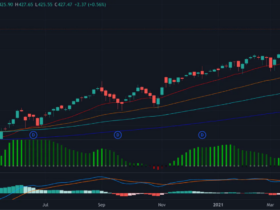About Radix
Radix (XRD) is a layer-one protocol specifically built for DeFi purposes. Radix promises to be the “layer 1 DeFi done right” since it allegedly will prevent the ever-present danger of exploits and hacks without compromising scalability. It employs a new consensus mechanism called Cerberus, which is supposed to deliver the performance needed to fulfill its ambitious goal of creating a new, decentralized global financial system.
Radix Defi also boasts its own version of the Ethereum Virtual Machine (EVM) called the Radix Engine. It allows developers to build for its ecosystem using pre-built Radix components. Combining all of these features, Radix aspires to replace leading DeFi chains like Ethereum and become the de-facto solution for decentralized finance in the future.
Quick Fact About Radix
| Coin Basic | Information |
|---|---|
| DEFI Coin Name | Radix |
| Circulating Supply | 4.62B XRD |
| Max Supply | 24,000,000,000 |
| Token symbol | RDX |
| Source Code | Click Here To View Source Code |
| Explorers | Click Here To Visit |
| Twitter Group | Click Here To Visit Telegram Group |
| Documentation | Click Here To View |
| Official Project Website | Click Here To Visit Project Website |
Smart Money Apps
Radix is building an open, interconnected platform where the full range of powerful DeFi applications will be built securely and safely.
Stable Coins
Collateralized Lending
Perpetual Futures
Decentralized Exchanges
Wallets & Dashboards
Money Markets
Yield Farming
Options & Derivatives
NFTsGaming
DeFi Insurance
Portfolio Management
Secure the network, earn tokens
Staking provides a critical function for the Radix network. The greater the value staked, the more secure the network is.
To help ensure network security, 300m RADIX (XRD) are generated by the protocol every year and shared amongst those that stake.
Based on current market prices, 300M XRD is worth around $19M
Radix Defi first version of the Radix Mainnet, Olympia, is secured using delegated proof of stake – this makes staking super easy. Transfer your XRD to your Radix wallet, choose the validator nodes you want to stake to and start earning staking rewards today.
Excellence, Step by Step
The path to unlimited scalability, developer royalties, and a great builder experience.
Betanet
A temporary test network supporting an intense period of public testing ahead of launch of the first version of the Radix mainnet: Olympia. Enable community participation in testing of wallets and nodes under real-world conditions.
Olympia
Decentralized network foundations with simplified unsharded Cerberus consensus, low fees, 50tps, 5sec finality time, and dPOS. Hold, transact, and stake tokens for network security and rewards using basic Olympia Radix wallet.
Alexandria
A new DeFi development experience with the Scrypto language and Radix Engine v2, with “component” smart contracts running in a private environment for early builds and testing. Give developers a head start on experimentation with building Radix Defi concepts and reusable features for Radix.
Babylon
An open, self-incentivizing DeFi ecosystem with Scrypto “component” smart contracts running on-network, decentralized Royalty System, and on-network Blueprint Catalogue. Open up fully featured, secure DeFi dApp ecosystem capability on Radix.
Xi’an
Unlimited scalability and composability to carry DeFi into the global mainstream future with sharded, linearly scalable Cerberus consensus.
A Token to Power the Radix Ecosystem
The native crypto currency of the Radix network is called RADIX (XRD) and is required for securing the network via staking, accessing DeFi, deploying smart contracts and paying for transactions.
Buy RADIX
In addition to the native RADIX (XRD) token, the eRADIX (eXRD) is also available. The eXRD is a wrapped ERC20 of the XRD, issued on the Ethereum Network. The eXRD can be swapped 1:1 for XRD via Instabridge.io or on Bitfinex.
Who Are the Founders of Radix?
Radix was founded in 2017 by the current CTO Dan Hughes, an expert in distributed ledger technologies that had been experimenting with Bitcoin back in 2011 and started working on scaling solutions in 2013. Hughes initially experimented with several scaling solutions like DAG and Channel Asynchronous State Trees and eventually decided to work with a data structure called Tempo for Radix.
Working alongside him is CEO Piers Ridyard, an experienced founder and executive with a history of working in the blockchain, crypto, and financial services industries. The leadership team also comprises of Russell Harvey, a former Microsoft and Kaiser Permanente executive, and Adam Simmons, a digital marketing expert that worked for Verasity.
How Many Radix (XRD) Coins Are There in Circulation?
XRD will initially be an ERC-20 token used for staking, voting, and paying network transaction fees before transitioning to its final native state. The total supply of XRD is 24 billion, distributed as follows:
- 12 billion was allocated at the genesis of the Radix Public Network. 9.6 billion of these tokens are unlocked and part of the circulating supply; 2.4 billion are indefinitely locked in the stable coin reserve.
- 12 billion is being minted by the Radix Defi Protocol as network emission to reward stakers and validators over an approximately 40 year period. Network emission commenced with the genesis of the Radix Public Network in July 2021.
Of the initial 12 billion, 4.41 billion were distributed as ERC-20 versions. These are distributed as follows:
- Community Contributions (3 billion): distributed to purchasers in the token sale that ran from 2013 to 2017
- Token Sale (642 million)
- Radix Foundation (568 million): Radix Tokens Ltd., a subsidiary of the Radix Foundation, will receive 200 million. 10 million ERC-20 XRD is allocated to marketing, subject to vesting.
- Developer Incentives (100 million)
- Network Subsidy (100 million)
How Is the Radix Network Secured?
Radix uses a version of sharding for its Cerberus consensus mechanism to deliver its promised top performance. Instead of global ordering, Cerberus uses partial transaction ordering, allocating transactions only to relevant shards. This enables Cerberus to employ a type of Byzantine Fault Tolerance that essentially allows three phases of consensus finding to run in parallel, thereby speeding up the process. That enables Radix to reach the instant finality needed for seamless processing of hundreds of thousands of transactions per second.












































Leave a Reply